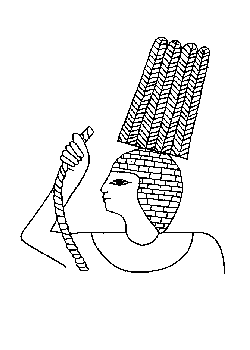
Greek name for the god Iniheret, 'He who has brought the far-off one', a name that refers to a late interpretation of certain myths. They tell how the eye of the sky god or sun god abandoned its owner and was then brought back by Onuris. This myth was merged with a similar story in which Onuris brings back the lioness Mehyt from the desert; together these two were long worshipped in This in the nome of Abydos. The Eye of Re was also regarded as a lioness and was then called Sakhmet, but could also be identified with Mehyt. Onuris was a hunter and warrior, who not only destroyed Egypt's enemies, but also those of the gods, such as Apophis. His weapons were a spear and a lasso. Texts from the New Kingdom call Onuris 'the god of gods', 'the king of the sky' and 'he who created himself', thus turning him into a creator and sun god. Onuris also formed associations with other gods in the pantheon, for example he was worshipped as Onuris-Shu. In another version of the story, it was Shu who brought back the Eye, this time as the goddess Tefnut, who in turn could be depicted as a lioness. The myths about the Eye gave Onuris some of the characteristics of Thoth, who healed the Eye of Horus. Onuris was also connected with the war god Montu, perhaps because he was also linked with yet another god, Horus ('with the strong arm'). Because of his characteristics as a fighter, the Greeks identified him with Ares. Representations show the god in human form, usually with a spear and a rope. Occasionally he has the head of a falcon. On his head are four tall feathers. The first evidence for a cult of Onuris comes from the Abydos region. In the Late Period, Nectanebo II built or rebuilt a temple of Onuris-Shu in Sebennytos in the Delta.